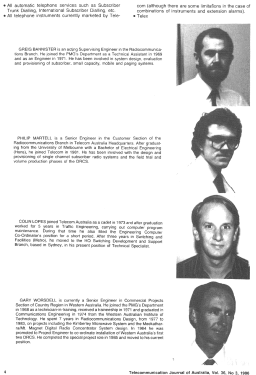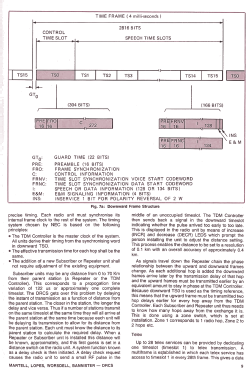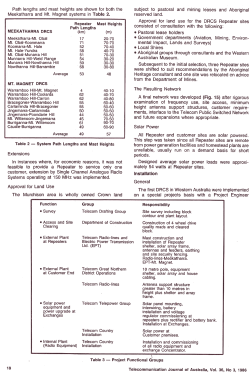Digital Radio Concentrator System (DRCS)
NEC Australia Pty. Ltd.; Glen Waverley, Victoria
- Land
- Australien
- Hersteller / Marke
- NEC Australia Pty. Ltd.; Glen Waverley, Victoria
- Jahr
- 1981–2000 ?
- Kategorie
- Diverses (Sonstiges) - siehe Bemerkungen
- Radiomuseum.org ID
- 355943
Klicken Sie auf den Schaltplanausschnitt, um diesen kostenlos als Dokument anzufordern.
- Anzahl Transistoren
- Halbleiter vorhanden.
- Halbleiter
- Hauptprinzip
- Spezialschaltung (siehe Bemerkungen)
- Wellenbereiche
- VHF/UHF (siehe Bemerkungen)
- Material
- Diverses Material
- von Radiomuseum.org
- Modell: Digital Radio Concentrator System - NEC Australia Pty. Ltd.; Glen
- Form
- Diverse Formen, unter Bemerkung beschrieben.
- Bemerkung
-
The Digital Radio Concentrator System (DRCS): A Lifeline for Outback Australia
The Digital Radio Concentrator System (DRCS) was a pioneering telecommunications solution deployed by Telecom Australia (Telstra’s predecessor) to provide automatic telephone services to remote areas of Australia during the 1980s. Prior to the DRCS, rural communities relied on manual exchanges and often unreliable high-frequency radio communications.
In response to the government's National Rural and Remote Programme, which aimed to extend automatic telephone services by 1990, Telecom Research Laboratories conceived the DRCS. Designed to withstand harsh Australian conditions and cater to homestead-based customers, the system employed a network of digital radio bearers to connect rural exchanges with up to 127 customers each. These bearers were regenerated at repeaters spaced approximately 50 kilometers apart, with a maximum system length of around 600 kilometers. Despite these limitations, Telecom successfully installed approximately 1,000 repeaters, covering a vast area of 2.8 million square kilometers.
The DRCS was a technological breakthrough, overcoming the challenges of providing telephone services across vast distances where traditional cable infrastructure was impractical. The system maximized flexibility and energy efficiency by utilizing a regenerative digital radio scheme with burst transmission.
NEC Australia was awarded the contract to develop and manufacture the DRCS equipment following a competitive tender process. Extensive testing and development were undertaken to ensure the system's reliability and performance.
The successful deployment of the DRCS in Western Australia marked a significant milestone.Detailed technical information about the DRCS, including system architecture, radio path surveys, and installation processes, was published in the Telecommunications Journal of Australia in 1986. The system's reliance on solar power at both subscriber and repeater sites further enhanced its resilience in remote locations.
Over its 20-year lifespan, the DRCS underwent upgrades to improve capacity. In recognition of its outstanding contribution to rural telecommunications, Telecom Australia received the 1986 Engineering Excellence Award from the Institute of Engineers Australia.
The DRCS is a testament to Australian engineering ingenuity and its role in connecting isolated communities to the wider world.
References:
Telecommunications Journal of Australia Vol. 36, No. 3, 1986 by P.H. Martell BE Hons., C. Lopes BE, G Worsdell AIT (Comm Eng), G.P. Bannister ARMIT.Australian Geographic No 29, Jan – Mar 1993. ” The Phone Goes Bush ”
- Literaturnachweis
- -- Original prospect or advert (Telecommunications Journal of Australia Vol. 36, No. 3, 1986)
- Autor
- Modellseite von Gary Cowans angelegt. Siehe bei "Änderungsvorschlag" für weitere Mitarbeit.
- Weitere Modelle
-
Hier finden Sie 4 Modelle, davon 4 mit Bildern und 0 mit Schaltbildern.
Alle gelisteten Radios usw. von NEC Australia Pty. Ltd.; Glen Waverley, Victoria





















